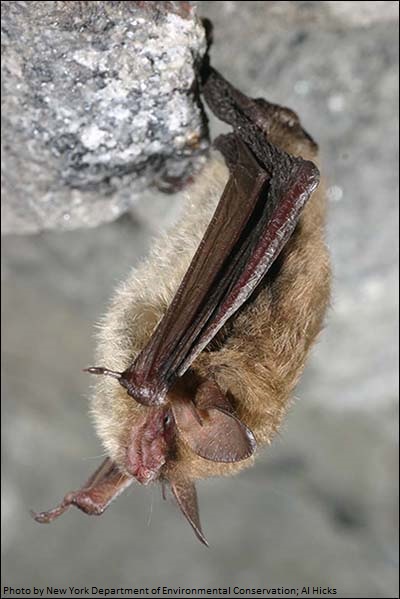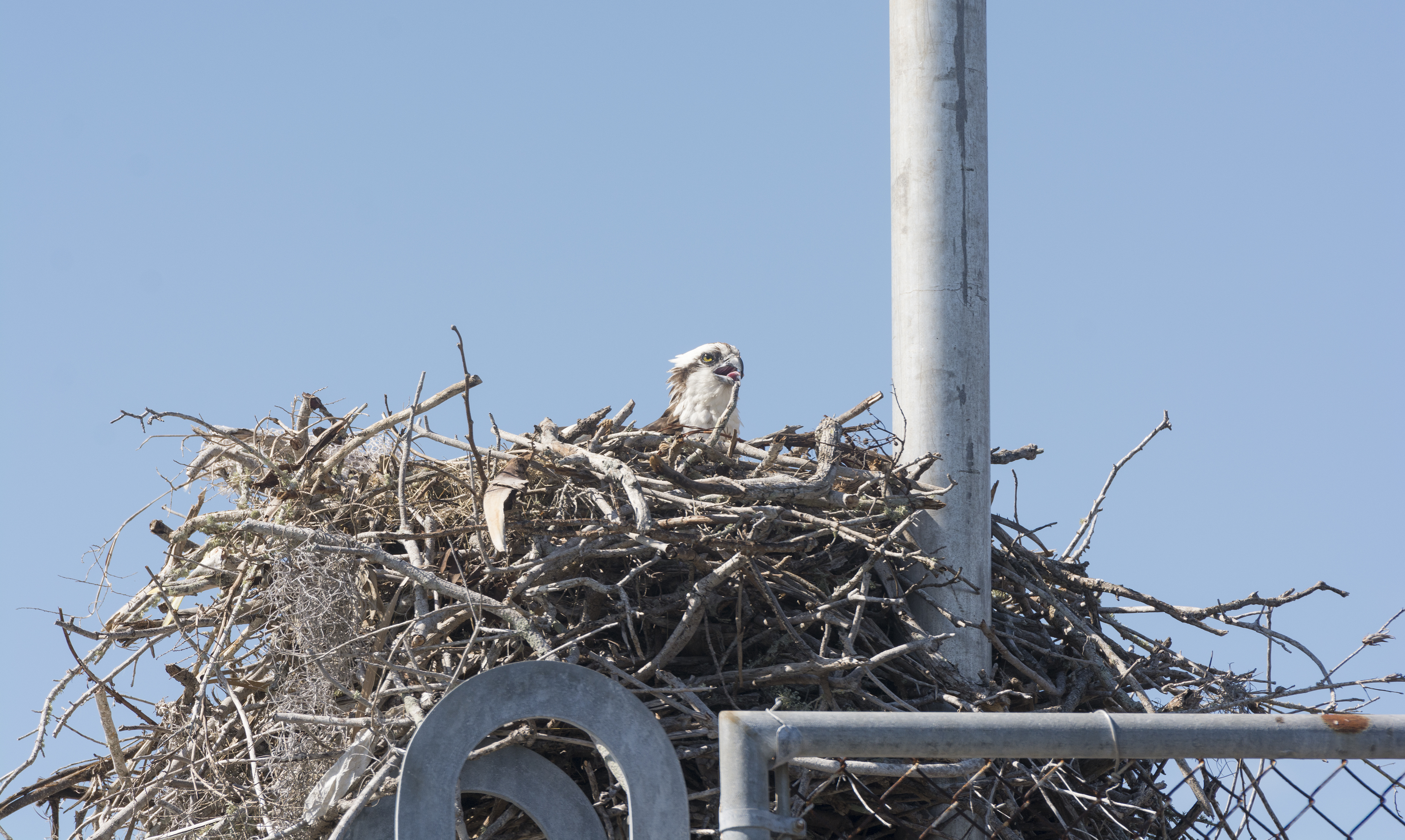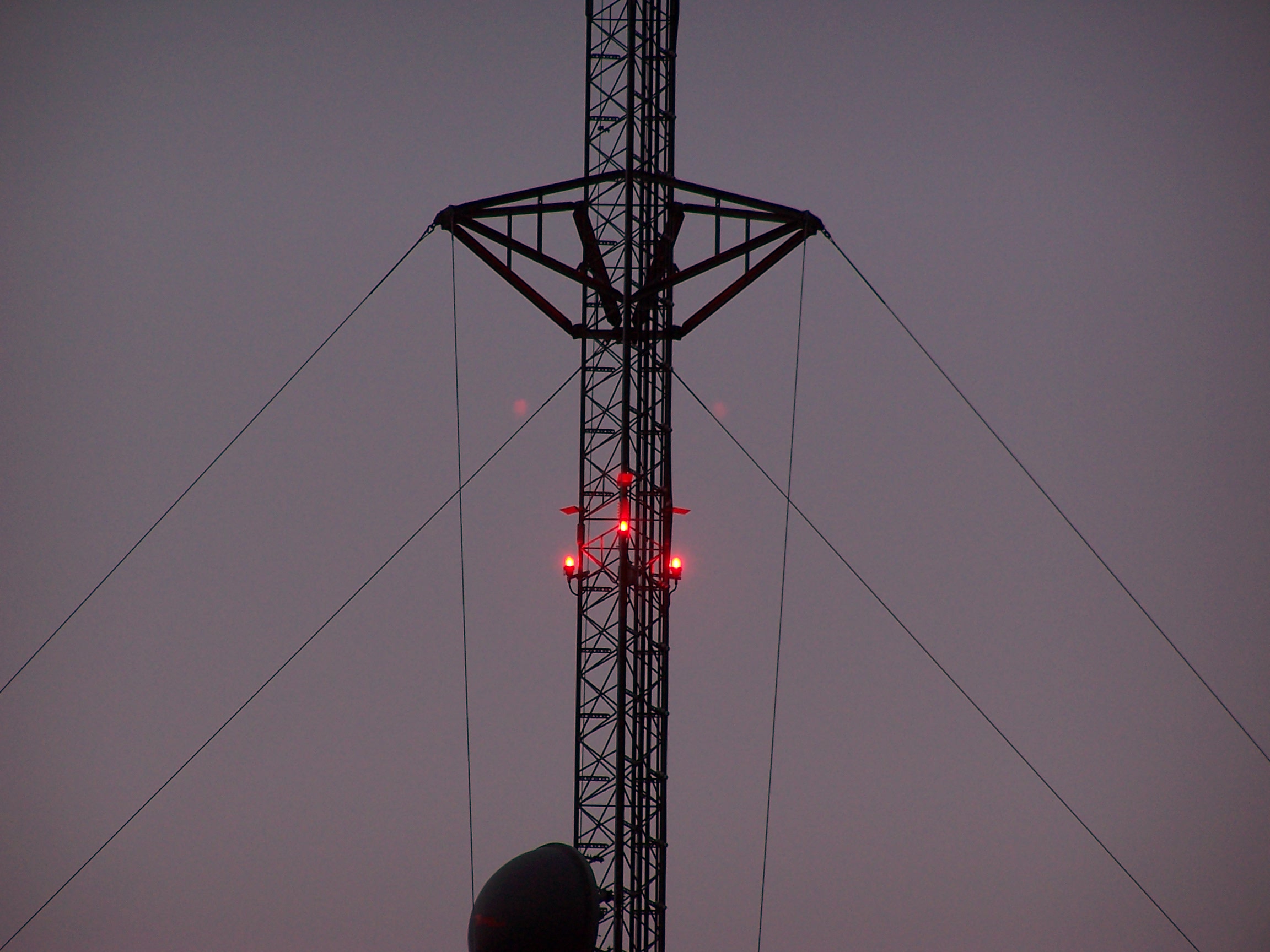Building new towers or collocating antennas on existing structures requires compliance with the Commission’s rules for environmental review. These rules ensure that entities constructing facilities to support Commission-licensed services take appropriate measures to protect environmental and historic resources, and that the agency meets its obligations under the National Environmental Policy Act (NEPA), National Historic Preservation Act (NHPA), as well other environmental statutes such as the Endangered Species Act (ESA). A new tower construction requires:
- Compliance with FCC rules implementing NEPA, which includes separate procedures for
- ESA; and,
- NHPA (including Section 106).
- In the interest of aviation safety, depending on the tower's height and location, construction may also require:
- Federal Aviation Administration (FAA) notification; and/or,
- Antenna Structure Registration (ASR) with the FCC.
Certain collocations, such as those involving a height or footprint increase, may also require compliance with these same processes. See the Amended Collocation Agreement and other sections below for more information about collocations that require compliance with NHPA, FAA, and ASR rules, and NEPA.
The construction of towers and other communications facilities may also require approval from the state or local governing authority for the proposed site.
The National Environmental Policy Act
NEPA requires an agency to consider and disclose the environmental effects of its actions to improve decision-making and encourage transparency, public participation, and  accountability. Effects are defined broadly to include ecological, aesthetic, historic, social, cumulative, and indirect effects.
accountability. Effects are defined broadly to include ecological, aesthetic, historic, social, cumulative, and indirect effects.
NEPA has three levels of review, depending on the significance of the effect (which, in turn, depends on the context and intensity of the action; for example, a tall, guyed tower in an ecologically sensitive area is likely to have more significant effects than a short, unguyed tower in an industrial area):
Categorical exclusions (CatExs)—for actions or types of actions which individually and cumulatively are deemed to have minimal or no impacts on the environment. The actions may therefore qualify as excluded from detailed environmental analysis.
Environmental Assessments (EAs)—for actions that may have significant environmental effects, an EA is prepared to analyze potentially significant impacts. If no significant impacts are found, the agency issues a Finding of No Significant Effect (FONSI).
Environmental Impact Statements (EISs)—for major federal actions with the potential to significantly affect the quality of the human environment. These actions require a detailed analysis of actions and alternatives and concludes with a Record of Decision (ROD).
NEPA does not mandate an outcome or prevent projects from moving forward; it only requires consideration of effects and of alternatives to avoid, minimize, or mitigate the environmental impact of a project. Each federal agency adopts its own procedures to implement NEPA, and the Council on Environmental Quality oversees NEPA implementation.
FCC’s NEPA Process
The FCC treats the construction and registration of towers and facilities intended to host FCC-licensed services as major actions that trigger agency NEPA obligations. Consequently, FCC rules impose enforceable duties on licensees and applicants in order to meet the agency’s NEPA obligations.
Facilities constructed by FCC licensees or to support FCC-licensed services are subject to environmental review and must comply with agency environmental regulations implementing NEPA. The rules apply to all licensees, applicants, registrants, and owners of facilities used for FCC-licensed service, such as commercial licensees, utilities, public safety entities, railroads, and mining companies. Tower owners that are neither licensees nor applicants must also follow these rules if they intend to host antennas supporting licensed service. These regulations ensure agency compliance with the NHPA and the ESA as well.
While the agency has delegated the initial assessment of CatExs (and certification to that effect if required) and preparation of EAs to licensees and applicants and/or tower owners, the obligation to comply with NEPA rests with the FCC. 
FCC environmental rules categorically exclude all actions from detailed environmental review except those associated with the construction of facilities that fall into certain categories. The categories of facilities requiring environmental assessments (EAs) include those facilities:
- Located in a wilderness area (most likely on federal land) or in a wildlife preserve (likely on federal land);
- That might affect threatened and endangered species or their habitat (ESA);
- That might affect properties included in or eligible for inclusion in the National Register of Historic Places or Indian religious and cultural sites;
- That will be located a floodplain and where facility equipment will NOT be placed at least one foot above the base flood elevation of the floodplain;
- Whose construction will involve “significant changes in surface features” (e.g., in wetlands, water diversions, significant ground disturbance, deforestation);
- That might affect migratory birds if the towers are over 450 feet;
- That involve high intensity lighting in a residential area; or
- That would cause RF radiation in excess of FCC-established limits.
If any element of a proposed project—including the tower, fence, trenching, roads, parking, power and fiber connections and their operation and maintenance—falls into any of these categories, including action within an easement, the applicant must file an EA which discloses those effects. After an EA is filed, the document is put on public notice for 30 days, during which time the FCC ensures its sufficiency and takes public comments. If no issues are identified after any substantial comments are addressed, the FCC issues a FONSI.
Complying with FCC environmental regulations requires completing an analysis of these categories and making a determination as to whether there may be a significant environmental effect prior to completing FCC applications, including but not limited to Forms 601 (for Radio Service Authorization) and Forms 854 (for Antenna Structure Registration) and prior to construction. Analysis includes, for example, compliance with ESA and NHPA requirements as described below. Regarding RF radiation, applicants must determine whether their facilities qualify for an exemption from environmental processing under 47 CFR § 1.1307(b)(3). If an applicant does not qualify for an exemption, it must prepare an evaluation of human exposure to RF radiation pursuant to 47 CFR § 1.1310 to confirm that the proposed facility will be in compliance with the limits in 47 CFR § 1.1310 or to determine that it must prepare an EA evaluating the effects of RF that exceed the limits in 47 CFR § 1.1310. Applicants submitting EAs for any reason should indicate in the EA which subsection of § 1.1307(b)(1) applies to their project and include any required confirmation statement or analysis.
If the applicant determines that it is not required to submit an EA, it should retain documentation of its environmental review that can be produced upon request from the FCC.
Despite the presumption of actions being categorically excluded, the agency may order additional environmental review of facilities beyond those listed above, or upon consideration of public comments.
- Under 47 CFR 1.1307(c), an interested person that alleges that a particular action, otherwise categorically excluded, will have a significant environmental affect may file electronically a written petition with the Bureau setting forth in detail the reasons justifying or necessitating environmental consideration in the decision-making process. The Bureau will review the petition and consider the environmental concerns that have been raised, and if it determines that the action may have a significant environmental impact, the Bureau will require the applicant to prepare an EA, which will serve as the basis for the determination to proceed with or terminate environmental processing.
- Under 47 CFR 1.1307(d), the Bureau may also determine that a proposal that is otherwise categorically excluded may have a significant environmental impact, and on its own motion, require the applicant to electronically submit an EA.
- The agency may also ask for mitigation to reduce project impacts.
Regardless of whether an EA is required for a project, grading soil, removing vegetation, clearing an area or otherwise beginning construction or building without following these requirements or before completion of the FCC’s environmental process can constitute a violation of FCC rules and subject the party to potential enforcement action. Granting a license is NOT an authorization to build unless all environmental review requirements have been met, including: review, analysis, and completion of the NEPA Checklist to determine if the project qualifies for a CatEX; filing an EA (where required); receipt of the antenna structure registration number (ASR); and conclusion of the 30 day period for public notice period where required; and resolution of any requests for environmental review, where applicable.

Below is more information about the FCC NEPA process and compliance with related environmental statutes.
- NEPA FAQs
- NEPAssist - a tool that facilitates the environmental review process
-
Document
- Form 601 Flow Chart
- Form 854 Flow Chart
-
Document
Endangered Species Act
Section 1.1307(a)(3) of the Commission’s rules, 47 CFR §1.1307(a)(3), requires applicants, including licensees and tower owners, to consider the impact of proposed facilities on sensitive species and their habitats. Under the Endangered Species Act (ESA), 16 U.S.C. § 1531 et seq., it is prohibited to “take" (i.e., to harass, harm, pursue, hunt, shoot, wound, kill, trap, capture, or collect, or to attempt to engage in any such conduct) fish or wildlife species listed as endangered or threatened, with certain exceptions. The ESA also requires federal agencies to ensure that agency actions are not likely to jeopardize the continued existence of any endangered or threatened species or result in the destruction or adverse modification of designated critical habitat. Consistent with this obligation, applicants must determine before constructing and before submitting an EA if required whether any proposed facility may affect listed, threatened or endangered species or designated critical habitats, or are likely to jeopardize the continued existence of any proposed threatened or endangered species or designated critical habitats.
The U.S. Fish and Wildlife Service (USFWS), which administers the ESA, provides an online mapping tool to determine which species and habitats may need to be considered for proposed facilities. A qualified biologist or the USFWS must determine the type of effect a proposed facility will have on protected resources.
 All FCC licensees, applicants, tower companies, and their representatives have a blanket designation and are authorized to contact and work with the USFWS as non-federal representatives of the FCC for purposes of informal consultation with the USFWS. Applicants must submit a request for USFWS concurrence with the applicant’s effects determination. If a qualified biologist or the USFSW determines that a proposed facility may have an adverse effect, the applicant must notify the FCC and file an environmental assessment. If a qualified biologist or the USFWS determines that the proposed facility "may affect, likely adversely affect" protected species or habitats, the applicant must prepare a biological assessment and submit it to the Commission, and the Commission will then request formal consultation with the USFWS. In significant portions of the United States, applicants must follow the USFWS process for considering effects to the Northern Long-Eared Bat and American Burying Beetle. In some regions, USFWS offers Blanket Clearance to proposed facilities meeting certain criteria to streamline these processes.
All FCC licensees, applicants, tower companies, and their representatives have a blanket designation and are authorized to contact and work with the USFWS as non-federal representatives of the FCC for purposes of informal consultation with the USFWS. Applicants must submit a request for USFWS concurrence with the applicant’s effects determination. If a qualified biologist or the USFSW determines that a proposed facility may have an adverse effect, the applicant must notify the FCC and file an environmental assessment. If a qualified biologist or the USFWS determines that the proposed facility "may affect, likely adversely affect" protected species or habitats, the applicant must prepare a biological assessment and submit it to the Commission, and the Commission will then request formal consultation with the USFWS. In significant portions of the United States, applicants must follow the USFWS process for considering effects to the Northern Long-Eared Bat and American Burying Beetle. In some regions, USFWS offers Blanket Clearance to proposed facilities meeting certain criteria to streamline these processes.
- USFWS Delegation Letter
- Online Endangered Species Act Review using IPaC
- Fact Sheet: Minimizing Habitat Fragmentation
- Fact Sheet: Minimizing Effects on Prairie Grouse and Sage Grouse
- Guidance on Northern Long-Eared Bat
- Guidance on the American Burying Beetle
Migratory Birds
Under the Note to paragraph (d) of Section 1.1307, the Commission’s rules require an applicant to prepare an EA that considers the effects on migratory birds when a proposed antenna structure will be over 450 feet above ground level (AGL). Each year, millions of birds collide with communications towers and die. Tall, lit, and guy-wired towers are implicated in significantly more bird fatalities than short, unlit, self-supported towers. However, towers of almost any height have the potential to harm migratory birds, and tower owners can reduce or minimize these effects in a number of ways, often at little or no cost to the tower owner. For example, using flashing lights can help prevent collisions because birds are less attracted to flashing lights than non-flashing lights.
The USFWS has formulated voluntary guidelines for tower siting to address potential effects on migratory birds. These guidelines include suggestions on tower siting, height, and lighting to avoid adverse effects to migratory birds. The Avian Power Line Interaction Committee (APLIC), a collaboration of the utility industry, wildlife resource agencies, conservation groups, and manufacturers of avian protection products, also developed guidance for methods to reduce bird/power line electrocutions and collisions which reduces bird mortalities and associated power outages. Tower owners should consider incorporating these guidelines into their tower projects and maintenance operations.
As of September 28, 2016, the Federal Aviation Administration (FAA) no longer permits red non-flashing lights on any new tower above 150 feet AGL. The FAA has asked owners of existing towers to submit plans for eliminating the use of non-flashing lights on existing towers; and the FCC and FAA have developed a process by which registrants may do so.
- Fact Sheet: Addressing Raptor Nesting on Towers
- FAA Advisory Circular on Obstruction Marking and Lighting
In order to better protect endangered species and migratory birds, the Wireless Telecommunications Bureau released a Final Programmatic Environmental Assessment (PEA) that evaluates the potential environmental effects of the FCC’s Antenna Structure Registration (ASR) program.
The National Historic Preservation Act
The National Historic Preservation Act (NHPA) of 1966 is implemented through the FCC's environmental rules. Section 106 of the NHPA requires federal agencies to consider the effects of federal undertakings on historic properties. The FCC treats the construction of communications towers and the collocation of communications equipment using FCC-licensed spectrum as federal undertakings subject to Section 106 review. While Antenna Structure Registration (ASR) is required for some communications towers, Section 106 review may be required even if ASR Registration is not required.
Commission licensees and applicants are delegated the responsibility for initiating the Section 106 review process for proposed facilities, providing notice to the public and local government, identifying and evaluating historic properties, and assessing effects. This process includes consultation with the appropriate State Historic Preservation Officer (SHPO), or Tribal Historic Preservation Officer (THPO) for projects proposed on Tribal lands, as well as notification to Tribal Nations that have expressed an interest in reviewing projects proposed in their designated areas of interest. The Commission maintains two databases, the E-106 system and the Tower Construction Notification System (TCNS), to facilitate communications with these parties. The Commission remains responsible to participate in a review when an historic property may be adversely affected and to consult with Tribal Nations requesting government-to-government consultation.
Historic properties are sites, structures, buildings, and objects that are listed on or eligible for listing on the National Register of Historic Places. Lists of these historic properties are maintained by the National Park Service and SHPOs. For Tribal Nations, historic properties include historic properties of cultural and religious significance. Due to the sensitive nature of these historic properties, these places are often not publicly identified. Tribal Nations have the option to provide this information to the FCC through its Federal Preservation Officers who will ensure that the information is protected throughout the Section 106 process.
NHPA Information
- Title 36 of the Code of Federal Regulations, Part 800, Subpart B.
- Advisory Council on Historic Preservation (ACHP) Home Page
- MO&O clarifying licensees' responsibilities in complying with the NHPA.
- ACHP Handbook on Consultation with Indian Tribes in the Section 106 Review Process
The Nationwide Programmatic Agreements
The Commission has entered into two Nationwide Programmatic Agreements (NPAs) with the Advisory Council on Historic Preservation (ACHP) and the National Conference of State Historic Preservation Officers (NCSHPO). The ACHP is an independent federal agency that oversees the Section 106 review process required by the NHPA, and NCSHPO is a nonprofit organization that represents its SHPO membership. These NPAs describe the Commission’s Section 106 processes for new tower construction and collocation of communications equipment on existing structures. The Collocation NPA has been amended twice, in 2016 and again in 2020. The NPAs do not apply on Tribal lands unless a THPO or Tribal government elects to follow them.
The NPAs exclude certain proposed facilities from Section 106 review. When review is required, project proponents prepare either the FCC Form 620 (new towers) or the FCC Form 621 (collocations), which are available on the FCC Forms Page. The Form 620 and Form 621 must be completed by qualified individuals as stated on the forms. These forms are submitted directly to the SHPO and are not sent to the FCC unless requested by the FCC. Forms must also be submitted to Tribes expressing an interest in reviewing the project and to any entities or individuals granted “consulting party” status.
Project proponents are encouraged to complete the Form 620 and Form 621 using the E106 system as the system contains internal checkpoints to ensure that they are complete and accurate. Forms may also be uploaded to the E106 system once complete. E106 filing is necessary to initiate the SHPO and Tribal review shot clocks that enable referrals to the FCC when reviewers fail to respond. Using the E106 system facilitates FCC access to answer questions or address issues during the Section 106 process. Prior to submitting, the applicant must confirm whether the specific SHPO utilizes E-106 for Section 106 reviews and determine the preferred submittal procedures for SHPOs and Tribal Nations. SHPOs may be required by state law to maintain paper documents and the NPAs require project proponents to honor Tribal Nations’ reasonable communications preferences.
If a SHPO has not responded within 30 days, determinations of “No Adverse Effect” can be submitted to the Commission by emailing the Federal Preservation Officer (Ellen Saint Onge at Ellen.SaintOnge@fcc.gov) and concurrently submitting a referral in the E-106 system.
If a proposed project will have an adverse effect on historic properties, the project proponent must notify the FCC and invite the ACHP to participate using the ACHP’s e106 system. The project proponent must submit to the SHPO and all consulting parties, including Tribal Nations that request such status, a plan to avoid, minimize, or mitigate the adverse effect in cases where an alternatives analysis demonstrates that the proposed location is the only feasible option due to engineering requirements or other constraints. The FCC may review these plans.
In addition, the project proponent and the consulting parties should consult to develop appropriate mitigation measures. Mitigation measures should have a public benefit related to the adverse effect, preferably benefitting the impacted historic property. Payments of cash are not appropriate. The project proponent should prepare a
to be signed by the FCC, SHPO, project proponent and all consulting parties. For review prior to any party’s signature, the draft MOA must be sent as a word document to the FCC at s106.moa@fcc.gov. If the MOA needs to be amended, this
should be used.
Section 106 Tools
ACHP Delegation Letter for Section 106 Review
- The Collocation NPA Factsheet, adopted on January 10, 2002, provides guidance to the public on the original Collocation NPA, which was adopted on March 16, 2001. This Factsheet does not address amendments to the Collocation NPA in 2016 and 2020.
Section 106 Process and Consulting Party Involvement Q&A
Wireless Infrastructure Second Report and Order
- Questions and Answers (Last Updated September 30, 2019)
-
Document
(11/15/2021)
Tribal Notification
The NHPA requires that federal agencies must consult with any federally-recognized Tribal Nation that attaches religious and cultural significant to historic properties affected by an undertaking in carrying out the Section 106 review process.
Since 2004, the Commission has maintained the Tower Construction Notification System (TCNS), an on-line, password-protected system that notifies all Tribal Nations, Native Hawaiian Organizations (NHOs), and State Historic Preservation Officers (SHPOs) of proposed communication tower construction in their areas of interest. Applicants must submit the Form 620/621 to Tribal Nations to initiate Section 106 review. Uploading the relevant form to the E-106 system will notify Tribal Nations that the materials are ready for review and track the 30-day period that is ordinarily considered reasonable time for review. Tribal recipients can respond directly to the companies if they have concerns about a proposed construction.
In order to use the FCC’s online filing systems, you need to register and receive an FCC Registration Number (FRN).
The Commission follows guidance published by the Advisory Council on Historic Preservation (ACHP) with respect to the role of Tribal Nations in the Section 106 Review Process.
Indian Tribal Contacts
Tribal Nations Leaders Directory (Bureau of Indian Affairs)
Section 106 Reviews for Wireless Communications Facilities Construction and Modification Involving Multiple Federal Agencies
In 2009, the ACHP issued a Program Comment to facilitate the deployment of broadband by eliminating duplicative Section 106 reviews for projects regulated by the Commission but funded or otherwise subject to involvement by another federal agency.
The Program Comment was extended and expanded in 2015 and amended in 2020 and relieves the US Department of Agriculture Rural Utility Service (RUS), National Telecommunications and Information Administration (NTIA), Federal Emergency Management Agency (FEMA), First Responder Network Authority (FirstNet), Department of Homeland Security (DHS), Federal Railroad Administration (FRA), Federal Transit Administration (FTA), and the Office of Surface Mining Reclamation and Enforcement (OSMRE) from the need to comply with Section 106 for communication facilities that have undergone or will undergo Section 106 review by the FCC.
Project proponents should contact the FCC’s preservation officers to discuss Section 106 procedures for facilities proposed on federal or Tribal lands.
Additional Pre-Construction Requirements
The Federal Aviation Administration (FAA)
Notification to the FAA is required for any tower construction or alteration of an antenna structure that is registered with the Commission’s Antenna Structure Registration system. Towers that meet certain height and location  criteria (generally towers more than 200 feet above ground level or located near an airport) require notice to the FAA and ASR registration with the FCC. Prior to completing registration with the Commission, an antenna structure owner must have notified the FAA (via FAA Form 7460-1) and received a final determination of "no hazard" from the FAA.
criteria (generally towers more than 200 feet above ground level or located near an airport) require notice to the FAA and ASR registration with the FCC. Prior to completing registration with the Commission, an antenna structure owner must have notified the FAA (via FAA Form 7460-1) and received a final determination of "no hazard" from the FAA.
The FCC's TOWAIR program can be used to unofficially determine if a proposed construction meets FCC registration requirements. However, proposed antenna structure owners (applicants) must still file a Notice of Construction (FAA Form 7460-1) with the FAA to obtain a No Hazard Determination.
Antenna Structure Registration (ASR)
The ASR rules are contained in Part 17 of the Commission's Rules (47 C.F.R. Part 17). Information about registering antenna structures is available on the FCC's website.
Once applicants obtain a No Hazard Determination from the FAA, Commission's Part 17 rules require applicants to submit the FAA’s study number, along with FCC Form 854, to the Commission. The Commission then verifies with the FAA the accuracy of the marking and lighting specifications provided by the applicant. If the Commission accepts the application, it issues a registration (Form 854R), which typically incorporates the FAA’s “no hazard” marking and/or lighting specifications and assigns the antenna an ASR number. Once an antenna structure is registered, its owner must ensure that the structure complies with all the relevant FAA prescribed lighting specifications on the registration, or the owner may be subject to Commission enforcement action. No changes to the specifications in the ASR are permitted without prior approval from both the FAA and the Commission. Owners seeking to change an antenna structure’s specifications must first seek FAA approval, and only then may they file a request with the Commission to modify the ASR. Prior to changing the marking or lighting on the structure, antenna structure owners must receive a modified ASR form from the Commission incorporating the change.
Once the antenna structure or tower is constructed or altered, the owner must then file FAA Form 7460-2, Notice of Completion of Construction or Alteration, with the FAA, and FCC Form 854 with the Commission notifying both agencies that the construction has been completed.
Environmental Notification Process
The Commission's environmental notification process, codified at 47 CFR § 17.4(c), went into effect on June 18, 2012, and must be completed by all ASR applicants unless an exception applies or a waiver is granted. ASR applicants that are required to complete this process must provide local and national public notice of proposed new construction and some modifications of antenna structures. Local public notice is typically provided by the applicant via local newspaper. National public notice is published on the Commission's website using information submitted by the applicant via the Commission's ASR website and is available online for 30 days, beginning on a date chosen by the applicant.
Interested persons may submit a request for further environmental review alleging that the proposed facilities or modification may have a significant environmental effect within 30 days of the national notice date. After the pleading cycle has concluded, the Bureau will issue a decision as to whether further environmental processing in the form of an environmental assessment to be submitted by the applicant is required. More information about ASR and the environmental notification process can be found here.
Antenna Structure Painting and Lighting
The ASR program fulfills the Commission's statutory duty to require the painting and lighting of antenna structures that may pose a hazard to air navigation. Based on FAA recommendations, the Commission requires the structure to be painted and lighted as necessary to make it conspicuous to aircraft. Part 17 of the Commission’s rules outlines these painting and lighting requirements. Importantly, antenna structure owners must immediately report any top light or flashing obstruction light outage or malfunction lasting more than thirty (30) minutes to the FAA by either their direct entry tool or by calling 877-487-6867, for Alaska 800-478-3576, so that a Notice to Airmen (NOTAM) can be issued. Continue to the FAA Light Outage Reporting webpage. The NOTAM Process Streamlining Measures PN gives a more detailed explanation of the NOTAM process.
While the Commission requires antenna structure owners to register and exercise primary responsibility for painting and lighting of antenna structures meeting the registration criteria, licensees and permittees, collocated on the tower or antenna structure, are also responsible to ensure that the structure maintain all FAA and FCC painting and lighting requirements. The FAA's Advisory Circular Marking and Lighting FAQs provides answers to some painting and lighting questions.
State and Local Authorities
Section 332(c)(7) of the Communications Act preserves state and local authority over zoning and land use decisions for personal wireless service facilities, but sets forth specific limitations on that authority. Specifically, a state or local government may not unreasonably discriminate among providers of functionally equivalent services, may not regulate in a manner that prohibits or has the effect of prohibiting the provision of personal wireless services, must act on applications within a reasonable period of time, and must make any denial of an application in writing supported by substantial evidence in a written record. The statute also preempts local decisions premised directly or indirectly on the environmental effects of radio frequency (RF) emissions, assuming that the provider is in compliance with the Commission’s RF rules.
Allegations that a state or local government has acted inconsistently with Section 332(c)(7) may be resolved by the courts. In September 2018, the Commission released the Wireless Infrastructure Third Report and Order and Declaratory Ruling to clarify the scope of Sections 253 and 332(c)(7) in various deployment contexts, including the deployment of small cells. Section 6409 of the Spectrum Act of 2012, codified at 47 U.S.C. § 1455(a), establishes a further limitation on state and local land use authority over certain wireless facilities. Specifically, it provides that a state or local government may not deny and shall approve any eligible facility request for a modification of an existing wireless tower or base station that does not substantially change the physical dimensions of such tower or base station, and defines eligible facility requests as including requests for the collocation, removal, or replacement of transmission equipment.
The Commission has adopted a rule, codified at 47 CFR § 1.6100, to further clarify and implement these requirements.
FCC Items Related to Section 332(c)(7) and Section 1455(a) include:
- Report and Order, FCC 20-153, adopted October 27, 2020 (revising the Commission’s rules implementing section 6409(a) of the Spectrum Act of 2012 to facilitate 5G deployment).
- Declaratory Ruling and Notice of Proposed Rulemaking, FCC 20-75, adopted June 9, 2020 (clarifying and seeking comment on changes to the Commission’s rules implementing section 6409(a) of the Spectrum Act to facilitate the upgrade of existing sites for 5G networks).
- Third Report and Order and Declaratory Ruling, FCC 18-133, adopted September 26, 2018 (adopting rule on shot clocks and clarifying scope of Sections 253 and 332(c)(7) for small wireless facilities).
- Report and Order, FCC 14-153, adopted October 17, 2014 (adopting rule to clarify and implement requirements of Section 1455(a), and providing further clarification of Section 332(c)(7)).
- Declaratory Ruling, FCC 09-99, adopted November 18, 2009 (clarifying certain aspects of the limits on state and local authority under Section 332(c)(7)).
- Report and Order, FCC 00-408, adopted November 13, 2000 (establishing procedures for requesting relief under Section 332(c)(7) from impermissible State and local regulation of wireless facilities based on the environmental effects of RF emissions).